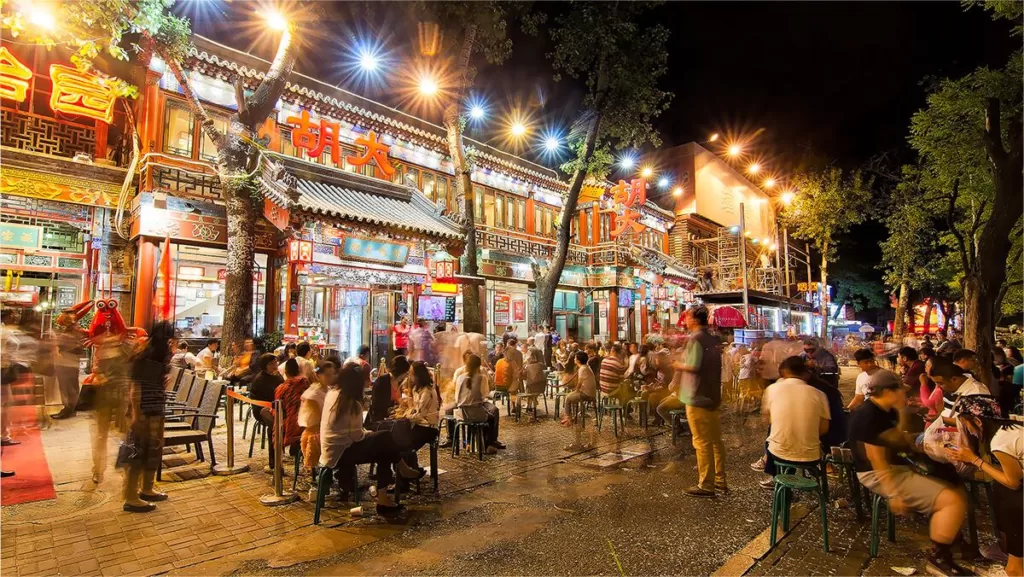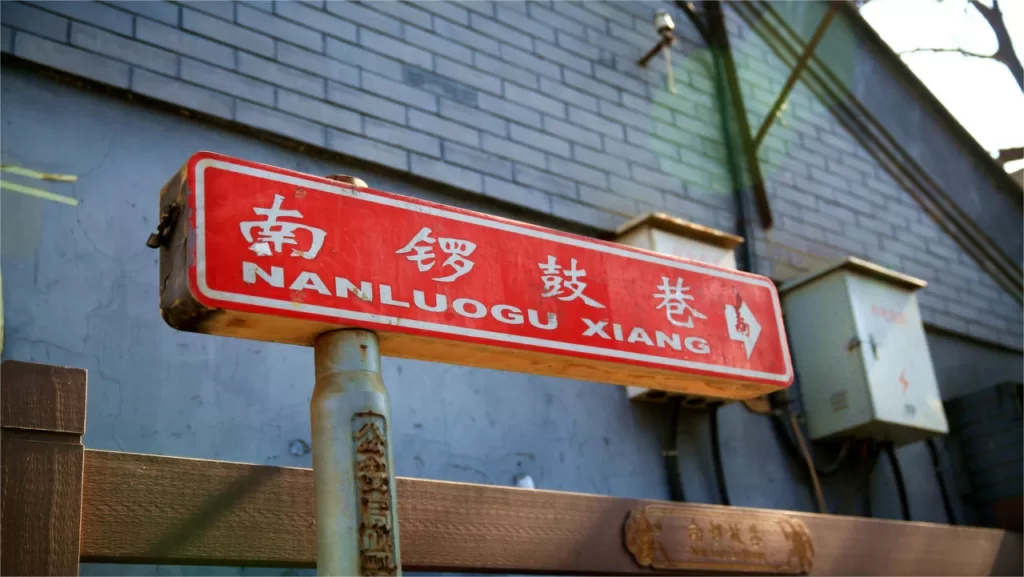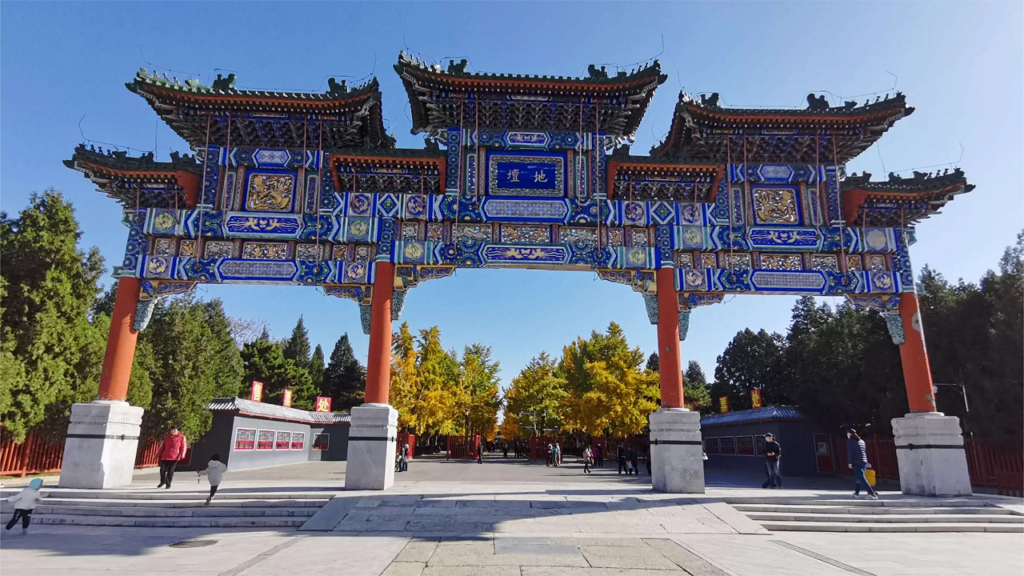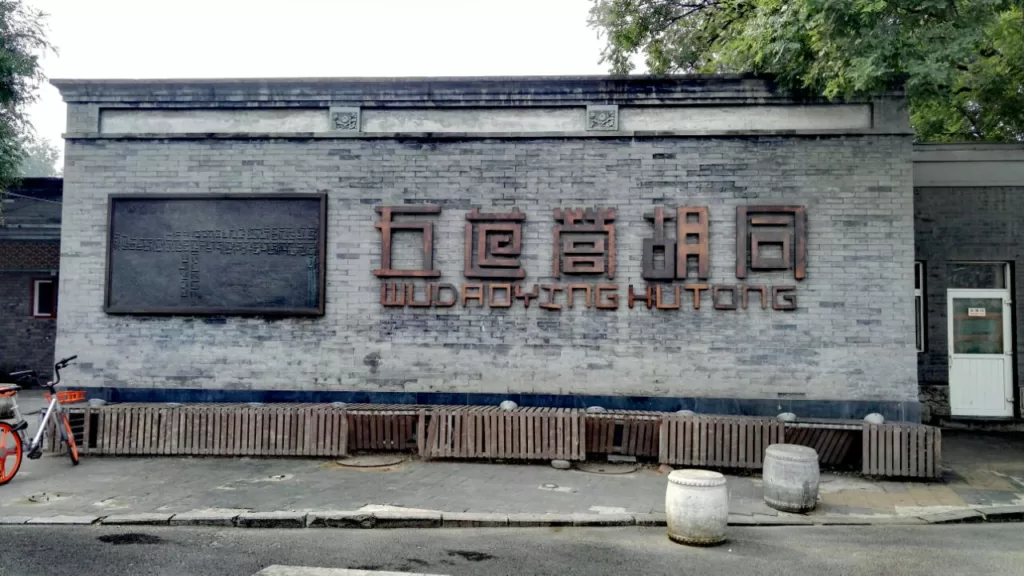The Beijing Temple of Confucius (北京孔庙, 北京文庙), also known as the Kong Miao in Chinese, is a historic temple located in the heart of Beijing, China. It was built in the year 1302 during the Yuan Dynasty and has since undergone multiple restorations and renovations. The temple is dedicated to the great Chinese philosopher and teacher, Confucius, and is the second largest Confucian temple in China.
The Beijing Temple of Confucius is a stunning example of traditional Chinese architecture and design. The temple is surrounded by beautiful gardens, pavilions, and sculptures that create a peaceful and tranquil atmosphere. The main hall of the temple, known as the Dacheng Hall, houses a large statue of Confucius and is the main attraction for visitors.
The temple is also home to numerous other structures, including the Xianshi Gate, where visitors can see ancient steles and inscriptions, and the Chongshengci, where imperial examinations were held during the Ming and Qing dynasties. The temple also has a large collection of ancient books, tablets, and cultural relics related to Confucius and his teachings.
Table of Contents
- Basic Information
- Location and Transportation
- History and Function of Beijing Temple of Confucius
- HIghlights of Beijing Temple of Confucius
- Map and Recommended Route
- Vlog about Beijing Confucius Temple
- Photography Tips and Spots
- Popular Restaurants near Confucius Temple
- Useful Tips Summarized from Reviews
- Attractions near Temple of Confucius
Basic Information
| Website | http://www.kmgzj.com/ |
| Estimated Length of Tour | 1 – 2 hours |
| Ticket Price | Adult: 30 RMB Children under 1.2 meters: free |
| Opening Hours | 8.30 -18.00; Last admission: 17.00 (1st May – 31st October) 8.30 – 17.00; Last admission: 16.30; Closed on Mondays (1st November – 30th April the next year) |
| Telephone Number | 0086-010-64075259 0086-010-64057214 |
Location and Transportation
The Beijing Temple of Confucius is located in the central Dongcheng district of Beijing, the capital city of China. The address of the temple is No. 13 Guozijian Street, Andingmen, Dongcheng District, Beijing.
The temple is situated in a busy commercial area and is surrounded by a vibrant mix of modern and traditional Chinese architecture. To the north of the temple is the Guozijian, a famous ancient imperial college that was once the highest institute of learning in the country. To the south of the temple is the Imperial Academy Street, a bustling pedestrian street that is lined with shops, restaurants, and street vendors selling traditional Chinese handicrafts and souvenirs.
Bus: Take bus 13 or 84, get off at Guozijian Stop (国子监), walk about 100 meters to the west to reach the entrance of Beijing Confucius Temple.
Subway: Take subway line 5, get off at Yonghe Lama Temple, exit from Exit F, walk along the street to the south, turn right at the first T cross, an you will reach the temple about 2 minutes.
History and Function of Beijing Temple of Confucius
The history of the Beijing Temple of Confucius can be traced back to the early 14th century during the Yuan Dynasty. The temple was first constructed in 1302, with additional buildings added during the Ming (1368-1644) and Qing (1644-1912) dynasties.
The temple was built as a place of worship and education, dedicated to the great Chinese philosopher and teacher, Confucius. It was established to honor Confucius and his teachings and to cultivate Confucianism, which became the dominant philosophy of the imperial court during the Ming and Qing dynasties.
Throughout its history, the temple underwent several major renovations and expansions. In 1724, during the Qing Dynasty, the temple was expanded to its current size, covering an area of 22,000 square meters. During this time, many of the structures that can be seen today were added, including the Dacheng Hall, the Xianshi Gate, and the Chongshengci.
During the Cultural Revolution in the 1960s and 1970s, the temple suffered significant damage, with many of its buildings destroyed or damaged. However, after the end of the Cultural Revolution in 1976, the government of China began a major restoration project to repair the damage and restore the temple to its former glory.
HIghlights of Beijing Temple of Confucius
Architecture

The architecture of Beijing’s Confucius Temple is a stunning example of traditional Chinese imperial style. The complex consists of several courtyards, each with its own set of ornate gates, pavilions, and halls. The most important building is the Dacheng Hall, where Confucius is worshipped. It has a magnificent yellow-glazed roof and is decorated with intricate carvings, paintings, and calligraphy. The Xingtan Altar is a raised platform used for making offerings to Confucius. The Chongsheng Memorial Archway is an impressive structure made of white marble and decorated with colorful paintings. The entire temple is surrounded by red walls, which add to its grandeur and historical significance.
Historical Significance

The Beijing Confucius Temple has played an important role in Chinese education and intellectual history. Originally built during the Yuan Dynasty to honor Confucius, the temple later became the Imperial Academy during the Ming and Qing Dynasties, where scholars studied Confucian classics and prepared for civil service examinations. It was considered one of the highest educational institutions in China at the time and played a crucial role in shaping Chinese culture and society. Many notable figures in Chinese history, such as Zhu Xi and Wang Yangming, studied at the Beijing Confucius Temple.
Cultural Relics
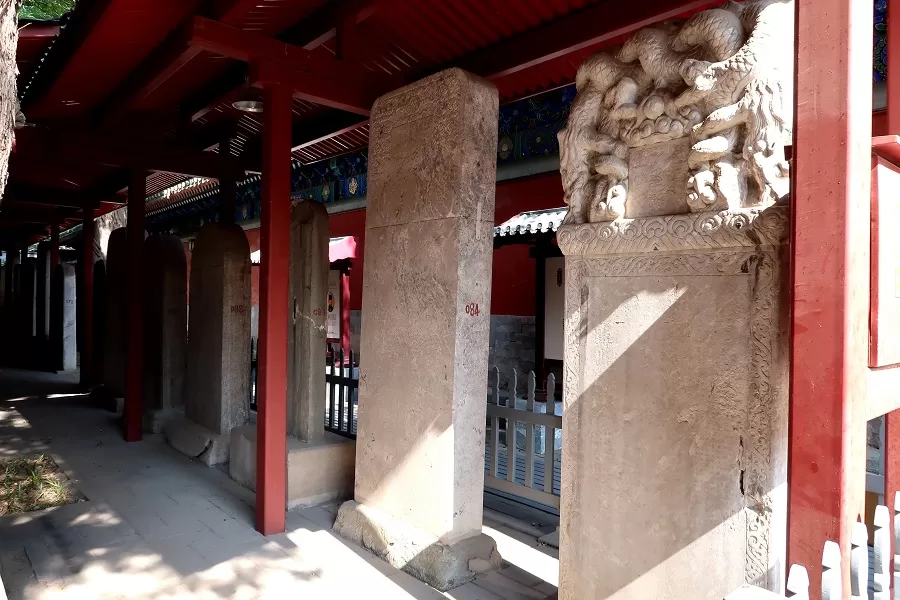
The Beijing Temple of Confucius houses numerous cultural relics that offer a glimpse into China’s rich cultural and intellectual history. The most famous of these are the 198 stone tablets, inscribed with the names of successful candidates in the imperial examinations, which were held during the Ming and Qing dynasties. These tablets are a testament to the importance of education and scholarship in Chinese society. In addition to the tablets, the temple also contains inscriptions, ancient books, and other relics that provide insight into Confucianism, Chinese philosophy, and the country’s political history.
Map and Recommended Route

Xianshi Gate (先师门): Start your visit at the Xianshi Gate, the museum entrance that retains Yuan Dynasty architectural style. The courtyard inside features stele inscribed with the names of over 50,000 successful imperial examination candidates from the Yuan, Ming, and Qing Dynasties.
Jinshi Stele (进士题名碑): Admire the Jinshi Stele, which records the names of successful candidates from the imperial examinations, showcasing the temple’s historical significance as a place of learning and honor.
Dacheng Gate (大成门): Proceed to the Dacheng Gate, the second gate of the Confucius Temple. A statue of Confucius stands in front, symbolizing wisdom and respect for the great philosopher.
Dacheng Hall (大成殿): Visit the Dacheng Hall, the main building of the Confucius Temple where ancient ceremonies honoring Confucius were held. Explore the Confucius exhibitions on either side of the courtyard for more insights into his life and teachings.
Cultural Store (文创店): Stop by the cultural store for unique souvenirs and memorabilia related to Confucius and Chinese culture.
Qianlong Stone Classics Stele Forest (乾隆石经碑林): Walk through the Qianlong Stone Classics Stele Forest, which contains 189 steles inscribed with Confucian classics. Some steles bear marks from rubbings taken in ancient times.
Taixue Gate (太学门 – 琉璃牌楼): Pass through the Taixue Gate, the only glazed archway in Beijing dedicated to education. The plaques on both sides of the archway bear inscriptions written by Emperor Qianlong.
Biyong Hall (辟雍殿): Visit the Biyong Hall, the only surviving ancient school hall where emperors used to give lectures. It stands as a testament to the importance placed on education and scholarly pursuits in ancient China.
Golden List Exhibition (金榜题名科举展): Explore the Golden List Exhibition, which provides an in-depth look at the ancient imperial examination system, including the rigorous process and the honor associated with passing the exams.
Exit through Guozijian (国子监): Conclude your visit by exiting through the Guozijian, the Imperial College, which served as the highest educational institution in ancient China.
Vlog about Beijing Confucius Temple
Photography Tips and Spots
Confucius Statue with Dacheng Gate Background
- Spot: In front of the Confucius statue with the Dacheng Gate as the backdrop.
- Tip: Position the camera at a low angle to capture the grandeur of the statue against the historical gate. The symmetry and architectural details of the gate will add depth to your photo.
Middle Corners of Buildings
- Spot: Utilize the middle corners of buildings to create a sense of depth.
- Tip: Stand at the corner of a building and shoot along the length of the structure to emphasize perspective. This technique will make the buildings appear more imposing and highlight their intricate details.
Panoramic Shot from Dacheng Hall Steps
- Spot: At the base of the steps leading up to Dacheng Hall.
- Tip: Use a wide-angle lens and shoot upwards to capture the full view of the hall. This angle will convey the majesty and scale of the structure.
Stele Pavilion in Front of Dacheng Hall
- Spot: In front of the Stele Pavilion located before Dacheng Hall.
- Tip: Frame the pavilion against the backdrop of Dacheng Hall. This shot will emphasize the historical significance and beauty of the temple complex.
Fountains as Foreground for Biyong Hall
- Spot: Outside Biyong Hall, using the fountains as the foreground.
- Tip: Position the fountains in the lower part of your frame, with Biyong Hall in the background. This composition will create a dynamic photo with a sense of movement and tranquility.
Confucius Statue and Sundial behind Biyong Hall
- Spot: Behind Biyong Hall, where the Confucius statue and sundial are located.
- Tip: Capture the statue and sundial in the same frame, focusing on the alignment and shadow play. Early morning or late afternoon light will create long shadows and add a dramatic effect to your photo.
Popular Restaurants near Confucius Temple
Xinhe Xiaoguan (新和小馆)
- Specialty: Three Delicacies Potstickers (三鲜锅贴)
- Description: Known for their flavorful and fragrant taste, these potstickers can be a bit oily on their own but are perfectly balanced with a bit of vinegar. Be prepared for a long wait; it’s best to get a queue number and explore nearby attractions while waiting.
Yonghegong Fried Chicken Shaobing (雍和宫炸鸡烧饼)
- Specialty: Fried Chicken Legs and Shaobing (鸡腿外酥里嫩)
- Description: A must-try for fried food enthusiasts, the chicken legs here are crispy on the outside and tender inside.
Mei Tan Village Pastry Shop (梅潭村糕饼铺)
- Specialty: Cheese-flavored Pastries and Taro Mud Boxes (芋泥盒子)
- Description: Ideal for cheese lovers, this shop offers delicious treats with a strong cheese flavor. The taro mud boxes are especially popular.
Daoxiangcun Zero Store (稻香村零号店)
- Specialty: Various Unique Pastries (剪纸方酥, 蔓越莓乳酪, 八戒果果)
- Description: Unlike the traditional Daoxiangcun pastries, the offerings here are not overly sweet. Notable choices include the Papercut Fangsu (剪纸方酥), Cranberry Cheese (蔓越莓乳酪), and Bajie Guoguo (八戒果果). Other flavors are available but may be less distinctive.
Useful Tips Summarized from Reviews
Photography Opportunities: For photography enthusiasts who can’t secure tickets to the Forbidden City or prefer to avoid the crowds, Beijing Confucius Temple offers great opportunities, especially during snowy weather.
Arrive Early: Getting there before 9:00 AM is recommended as the crowds are significantly fewer. Plus, on sunny days, the red walls may cast beautiful, dappled shadows, enhancing your photographs.
Visit the Guozijian (Imperial Academy): Upon entering the Guozijian, located to the right of the glazed archway, there’s a stone carved in the shape of a turtle. It’s said that rubbing the turtle brings good luck and academic success, especially for children.
Enjoy the Amenities: Throughout the street, you’ll find plenty of shaded areas, benches, and even water fountains, enhancing the overall visitor experience. Take advantage of these amenities to rest and rejuvenate during your exploration.




